Overview of combat night vision systems from Western manufacturers
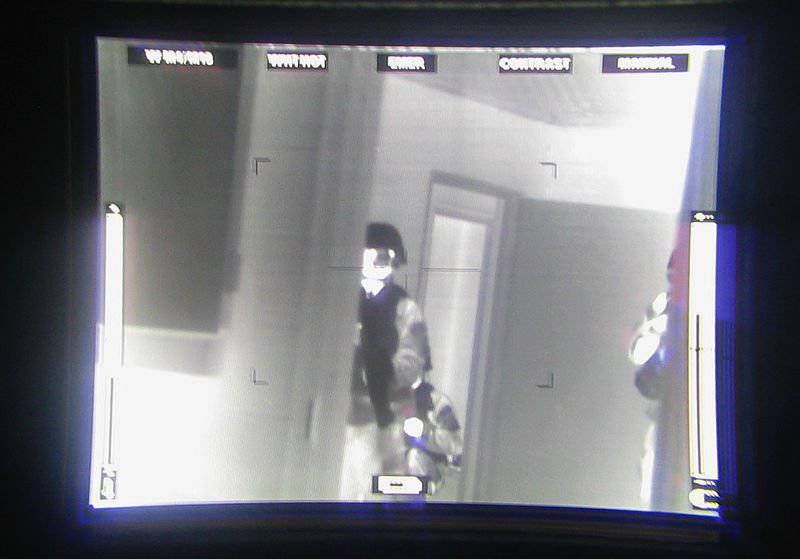
Thermal image of American soldiers on assignment
With regard to special night vision systems, the modern soldier had never before had the opportunity to choose from such a wide range. Several companies in North America and Europe produce special equipment so that a soldier can observe their common or specific targets of interest.
Combined systems are available on the market for round-the-clock surveillance along with devices for highlighting the target. For general night surveillance, there is a range of handheld thermal imaging models on the market that not only provide excellent nighttime surveillance, but also good visibility through the dust and smoke of the battlefield.
The night vision (NV) capabilities of modern combat surveillance systems are an essential tool for day-and-night combat. In addition, they are a tool that will determine the target with high accuracy, and then report it to other fighters. Along with sophisticated optoelectronic and infrared (OE / IR) systems, modern surveillance models are often equipped with communication interfaces that allow real-time data to be transmitted to the command and control network to higher echelons or neighboring units. These interfaces allow you to transmit complex information about the target in its pure form without interference, unlike voice instructions, for which there is always a risk of being not heard due to the noise of the battlefield with potentially catastrophic consequences.
The systems described in this article use thermal imaging to capture images of the surrounding terrain.
Thermal imaging mainly uses infrared lenses that collect focused radiation, then scanned by IR detectors placed on a phased array. Thus, the thermogram is created by the grid in approximately 1 / 5 seconds. The signal generation unit then converts the thermogram into electrical pulses and transmits this information to the display, which presents the image to the viewer at different brightness levels in accordance with the IR radiation that the object emits in the field of view.
Thermal imaging devices, by and large, are divided into uncooled systems operating at room temperature and cooled systems in which the sensor is cooled to approximately 100 Kelvin. The advantage of cooled systems is that they provide much better clarity, because the sensor can detect the smallest changes in temperature up to 0,1 ° C, even up to a distance of 300 meters. But refrigerated systems have the disadvantage that they are more fragile compared to their uncooled counterparts. In addition, they also need either a gas cylinder or a Stirling engine / pump to cool the sensor. The first solution has a significant logistic burden, while the second can sometimes be too noisy at a certain distance and is not suitable for hidden tasks.
Europe
Europe is home to several manufacturers of combat surveillance systems, including the French company Sagem Defense Securite. This company manufactures the JIM-LR and JIM-MR models. The JIM-LR cooled observation system with a small mass of about 2,6 kg has a sensitivity of 3-5 microns; Despite the cooling pump, this system is very quiet. This characteristic was repeatedly demonstrated during night exercises, when the JIM-LR device was almost inaudible even when working in a small empty room in the night silence. In addition, JIM-LR has three magnifications: x2, x4 and x8; and identification distances of about 3,5 km for tank, and the detection of such vehicles is possible at a distance of 9 km. The JIM-LR user also benefits from the installed GPS receiver, which ensures the exact location of the sensor and, therefore, any target of interest. This accuracy is further enhanced by the digital magnetic compass.
The Sagem JIM-MR for short-range has a wide field of view and a twofold increase in the 8-12 micron range. This allows the user to detect and identify a tank at a distance of 3,5 and 1 km, respectively. Meanwhile, the exact coordinates of the target are provided by a laser range finder and an integrated digital magnetic compass.
The VARIOVIEW handheld thermal imagers from the German company Jenoptik AG also use uncooled thermal imagers, which means they are completely silent. Jenoptik makes two main options: VARIOVIEW 150 and VARIOVIEW 75. The first has 150-mm IR lenses, the second 75-mm lenses, respectively, they are designed for long-range and near observation. In the VARIOVIEW 150 product line, Jenoptik offers a basic system that can only be used as a thermal imager and as a separate model to which a laser range finder has been added. Long battery life and low maintenance costs make the VARIOVIEW 150 "modest" from a logistic point of view. With regard to the recognition distances, the VARIOVIEW 150 can determine the human figure from about 5 km and a car at a distance of 8 km. VARIOVIEW 75 has similar characteristics, although its definition distances are 2,5 km for a person and 5 km for a car. In addition, the VARIOVIEW 150 and 75 models can be connected to an external power supply and video monitors.
For special surveillance systems, Jenoptik makes a NYXUS day / night observation platform, which can be mounted on a tripod, a useful option for continuous operation. 12-hour battery life also contributes to long-term performance. To obtain the coordinates of the target in NYXUS, a gyroscope and a goniometer (a device for measuring angles) are combined with a digital compass and GPS. For observation, the thermal imager is combined with binoculars, while the eye-safe laser rangefinder of the 1M class helps to accurately determine the coordinates of the target. Jenoptik notes that this product is ideal for artillery observer units along with advanced aircraft builders. To this end, the model NYXUS entered service with the German army back in 2007 year.
In addition to NYXUS, Jenoptik supplies the NYXUS-LR handheld thermal imager as part of the German IdZ-ES infantryman program. NYXUS-LR facilitates day-and-night surveillance and also provides good permeability through smoke and dust. It provides remote measurement and target coordinates along with its own position via a digital magnetic compass and optional GPS. There is also a CCD camera (CCD is a charge-coupled device, otherwise a semiconductor photosensitive matrix) along with a laser rangefinder. The definition ranges for the NYXUS-LR are about 5 km for the machine and 4 km for its identification (machine), the laser rangefinder also has similar ranges. Adding a wireless interface also allows the NYXUS-LR to transfer the image to other users.
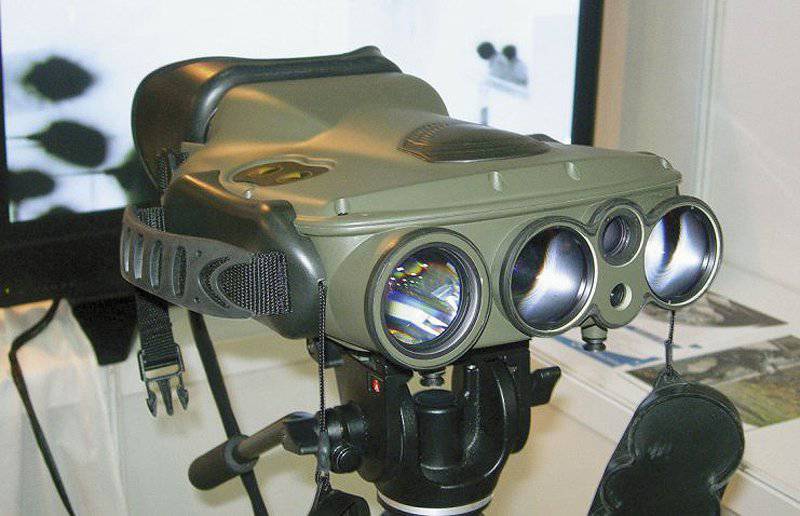
Jim lr
SOPHIE MF
Simrad VINGTAQS
Other members of the Jenxtik NYXUS family include the NYXUS MR and SR instruments. These uncooled lightweight thermal imagers, which, according to the company, provide "opportunities previously unattainable for portable uncooled equipment for long-distance detection of people and vehicles." The company produces NYXUS-MR and NYXUS-SR models for medium and short-range surveillance.
As the Sagem product line demonstrates, France is a center for producing excellent night surveillance systems, and Thales is also responsible for producing a number of similar systems. The company manufactures one of the most famous product series in this field, namely the SOPHIE family. SOPHIE models have an ergonomic design, a binocular configuration and, as stated by Thales, this family is the first hand-held long-wave thermal imaging system capable of operating independently of any external cooling system. SOPHIE was originally manufactured in the 8-12 micron range, which became the standard in NATO thanks to not only its ability to work in a wide variety of conditions, but also good permeability to smoke and dust typical of this range.
The SOPHIE family includes the cooled SOPHIE-MF model, which has three fields of view: narrow, wide and x2 magnification. Thales claims that the imager can operate under extreme conditions, at temperatures of –40 ° C - + 55 ° C; A useful feature for soldiers using a device in the climate of Afghanistan. Having a range of up to 10 km, this surveillance system also includes an RS-422 interface, a laser range finder and a laser pointer, a magnetic compass, built-in GPS and a daytime color camera. One of the attractive features of SOPHIE-MF is that it can be used to detect camouflaged targets.
A simple SOPHIE thermal imager joins the SOPHIE-MF model. Like his “brother”, he can work in similar extreme conditions and define camouflaged goals. SOPHIE also has three fields of view; narrow, wide and electronic zoom; complete model weighs 2,4 kg. SOPHIE has five hours of battery life, but, unlike SOPHIE-MF, it does not have a laser pointer, range finder or daytime color camera.
Both SOPHIE and SOPHIE-MF thermal imagers operate in the 8-12 micron range. However, SOPHIE-ZS from Thales operates in the 3-5 micron range and has a continuous x6 optical zoom, RS-422 interface and 2,4 kg weight. Meanwhile, SOPHIE-XF is a third-generation thermal imaging system for determining the location of a third-generation target. Like the SOPHIE-ZS, the SOPHIE-XF model has a continuous increase of x2.6-x16. In addition, the battery lasts for 7 hours of operation, and the range of the laser rangefinder is up to 10 km.
Thales operates under the motto “modularity” and therefore also manufactured a surveillance system known as the ELVIR Modular Uncooled Infrared Camera, which can be used as part of a laser thermal imaging system or as a separate product. With the range of determining 1,5 km for a person and up to 3,2 km for a tank, the operating temperature range for ELVIR is slightly less and ranges from -33 ° to + 58 ° C. Meanwhile, the ELVIR-MF, equipped with GPS, a digital magnetic compass and a lens with x4,7 magnification, forms a multifunctional variant in the ELVIR family. This model recognizes a car at a distance of 4,7 km and a person at 2,3 km.
Thales has vast experience in both optoelectronics and several other defense fields. The European continent, however, is also native to several companies specializing exclusively in similar products. One of these companies is the Belgian OIP Sensor Systems, which manufactures a number of thermal imaging surveillance systems. The company's product line includes an AGILIS device operating in the 3-5 micron range, it has a built-in GPS and a compass, an optional laser pointer and a range finder. AGILIS uses a closed-type Stirling cooling system, it operates at temperatures from -30 ° C to + 55 ° C. Customers who need remotely controlled thermal imaging equipment can choose the LEXIS long-distance reconnaissance and surveillance system from OIP Sensor Systems, which also includes a day-time camera and eye-safe laser range finder. LEXIS is available with both a cooled and uncooled sensor in the 3-5 or 8-12 micron range.
The CLOVIS Handheld Thermal Imaging Monitor is another entry in the OIP Sensor Systems catalog. CLOVIS has a determination range in excess of 25 km and an identification range of 10 km for an aircraft-sized target. Like AGILIS, CLOVIS has a sensor with a resolution of 3-5 micron with a closed-type Stirling device.
Another European leader in surveillance systems is the Norwegian company Simrad Optronics. The FOI2000 model of this company is modular and designed to equip advanced observers; It can be supplemented with a digital camera, a laser pointer and / or GPS. FOI2000 is based on the LP1OTL target location device of the same company and the FTI thermal imaging system from FLIR Systems. The left eyepiece lens of the LP1OTL shows a thermal image to the user who “communicates” with the device using the software menu based on the Windows-CT operating system. In addition, LP1OTL has a zoom function. The north-oriented gyroscope and the Vectronix GONIOLIGHT digital goniometer perform the function of determining target data. It is also possible to connect FOI2000 to the network, which will allow the image and data to be transferred to other users.
The Swiss company Vectronix AG has occupied its niche as a leading supplier of advanced surveillance equipment. In particular, its GONIOLIGHT goniometer can be connected to a tactical network, an external GPS, a gyroscope, or an external power source. Vectronix manufactures GONIOLIGHT in several versions that can be complemented by VECTOR binocular rangefinders, while GONIOLIGHT TI is complemented by a MATIS HH thermal imaging camera from Sagem. With the GONIOLIGHT GTI, this thermal imaging camera can be supplemented with a gyroscope. Alternatively, the GONIOLIGHT line can be equipped with thermal imaging cameras and laser rangefinders specified by the customer.
The UK is home to Qioptiq, which manufactures specialized thermal imaging surveillance systems for the ground forces. These products include an uncooled VIPIR-S thermal imaging sight with an x3 magnification. VIPIR-S can determine a person at a distance of 400 – 600 meters and weighs up to 700 grams. VIPIR-S operates in the 8-12 micron range and is powered by AA 4 batteries. The handheld thermal imaging device VIPIR-2S joins the line of the company. The latest model has an increase to x2,7, electronic zoom x2, it has an uncooled sensor. The VIPIR-2S weighs 950 grams and, like the VIPIR-2, works in the 8-12 micron range and is powered by AA 4 batteries.
The British company Innovative Sensor Development Ltd also manufactures thermal imaging systems along with sights and electro-optics for the driver. Surveillance products include a detailed DACIC (Detailed and Contextual Imaging Camera) vision camera, it operates at temperatures from -42 ° C to + 45 ° C and weighs in with the 6,5 case of kg.
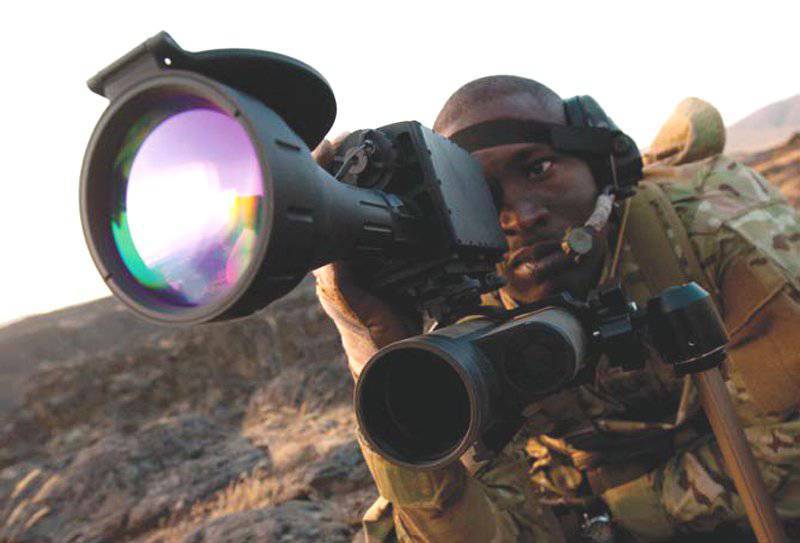
SEESPOT-III
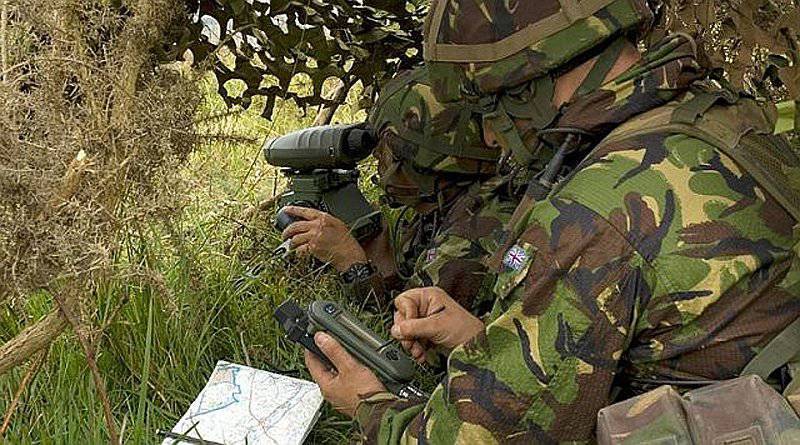
GONIOLIGHT Tl
Vectronix Binoculars
Customers who need handheld binocular rangefinders can choose the VECTOR family from Vectronix. These models gained extraordinary popularity and were sold to 17 countries only belonging to NATO, not to mention the rest. VECTOR binoculars have a laser rangefinder and x7 magnification, as well as an integrated digital magnetic compass; RS-232 wireless interface allows the user to easily transfer the image to his colleagues over the network. In order to improve the accuracy of the fire, the VECTOR family of binoculars has a digital calculator that allows the user to compare the meeting point with the desired aiming point. For long-term stationary tasks, VECTOR binoculars can be mounted on a single support or tripod. In the VECTOR family, the VECTOR-IV model is designed for infantry units, and the VECTOR-21 model is designed for use as a specialized advanced review system. The latest model has the same thermal characteristics as the VECTOR-IV Nite model.
The eye-safe MOSKITO laser rangefinder from Vectronix also has a binocular design and can measure vertical and horizontal angles. MOSKITO has an increase in x3 for night time and an increase in x5 for daytime work, and performs distance measurement at distances up to 4 km. Along with these characteristics, another useful attribute of the MOSKITO model is the brightness enhancement function with auto-gating. It adapts the image depending on the light conditions. This is especially important in urban environments when light conditions change rapidly. One has only to think about when you leave a dark room and go out into bright sunshine and vice versa, then you understand what effect it has on any vision. Although MOSKITO has a built-in GPS receiver, it can also be connected to an external GPS system if necessary. In addition to the VECTOR family and the MOSKITO model, Vectronix also manufactures BIG35 Night Binoculars night vision binoculars for conventional advanced surveillance operations.
Israel
Night vision systems of all types and generations are in service with the Israeli army; over the past 25 years they have played an important role in all military operations. As a result, the Israeli defense industry is currently a supplier of advanced systems, ranging from soldier's glasses to long-range surveillance systems combined with other sensors.
CORAL-CR developed by Elbit Systems Electrooptics El-Op is designed for observation at medium distances; his tests were conducted in the combat units of the Israeli army. According to the company, is able to mark and memorize 12-bit coordinates and transfer them back. CORAL-CR is a lightweight thermal imaging surveillance system with a range of several kilometers, designed for infantry and reconnaissance units. The portable device CORAL-CR is designed for simple operations.
In 2008, El-Op was selected to supply its MARS systems for the Israeli army. This handheld thermal target detection system uses an uncooled sensor technology. The system has a laser range finder, GPS, compass, day channel and recording system.
The company has now developed the HELIOS system, which is advertised as Rolls Royce among thermal imagers. HELIOS is installed on a tripod and has a system that combines a cooled thermal sensor, color and panchromatic cameras, a laser range finder, GPS and a compass. The company also manufactures video collection systems that will collect data from different sensors into a single image.
The target clientele for ITL is mainly land units such as infantry, snipers, reconnaissance and special forces. Portable, durable, energy efficient modern infantry systems allow you to work effectively in harsh combat conditions, without imposing a physical and psychological burden on the soldier. These systems range from individual modular models to entire combat systems optimized for high-precision operations.
ITL recently launched a family of very light, highly efficient, uncooled handheld thermal imaging models, weapons sights and surveillance systems under the designation COYOTE. COYOTE uses basic common components based on a unique energy-saving sensor, which is assembled with various lenses and adapts to customer requirements.
Optics COYOTE adapted for infantry or civilian patrols. This was achieved by adding a wide field of view, manually adjustable focus, adapter for weapons, mounts for tripod, laser pointer and cable for remote control in accordance with operational need. The device is available with different focal distances (20 mm, 45 mm), as well as with user-installed additional multipliers and magnifiers.
ITL is also developing a line of cooled thermal imaging systems. One of these systems HARRIER was recently selected by the Indian army.
A good example of ITL’s ability to assemble various capabilities into a single binocular system is the lightweight, multi-touch, binocular 24/7 surveillance and target detection system EXPLORER. This hardened all-in-one system combines an 3-generation thermal imager with a eye-safe laser range finder with a range of 15 km, a high-resolution daytime camera, an integrated laser range finder, an integrated GPS (Code C / A (coarse location code)) 12 channels), digital compass (degrees or miles, 1 ° rms accuracy) and inclinometer (± 60 °). The system has a continuous increase or three fields of view. The EXPLORER can be manual, mounted on a tripod or on a panoramic head, remotely controlled based on operational needs. ITL says that the EXPLORER provides excellent, highly efficient observation, detection, identification and tracking capabilities.
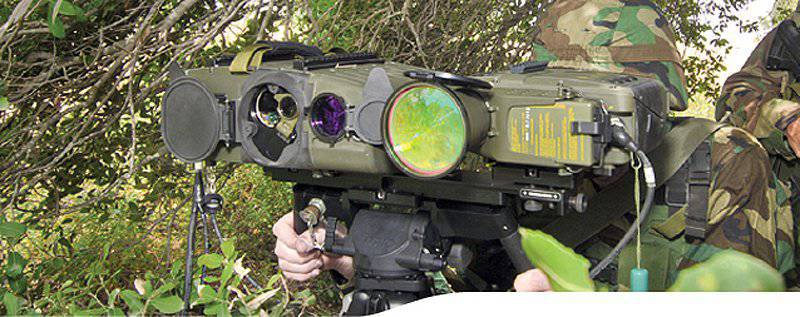
CORAL-LS plus LDR
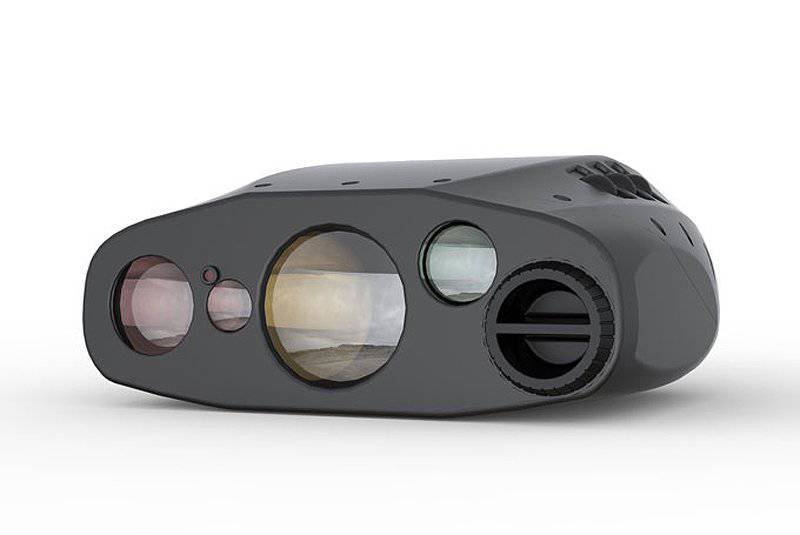
ITL EXPLORER
Controp recently released the FOX 1400 mm thermal imaging camera. This new model has joined the family of FOX thermal imagers widely known in the world. The new FOX camera has an 1400 mm lens with continuous x35 magnification. It provides observation and tracking of targets at “ultra-long” distances. FOX 1400 mm has already been delivered to several customers as part of an early warning system for coastal protection and surveillance. The family of thermal imagers, which includes FOX 250, FOX 450, FOX 720, has characteristics that are said in the company to distinguish them from other thermal imaging cameras.
The FOX continuous magnification provides a smooth transition between fields of view to observe, track, and then identify it closely. In addition, improved image processing algorithms create a high-quality image, even if there is a heat spot on the image (explosion, fire, etc.). Local automatic gain control provides a clear picture of the fine details in the image despite the extreme difference in the picture in the observed area and shadow areas. FOX cameras are available in three different magnifications: x12,5, x22,5 and x36. This allows them to be flexibly configured for any day and night requirements, be it terrestrial national security, aerial surveillance and reconnaissance programs or marine applications. In addition, FOX cameras, if necessary, can be connected to most existing radar systems, warning systems or other C4ISR systems (command, control, communications, computers, reconnaissance, surveillance and reconnaissance) to ensure maximum security. This small camera has a small mass and is available with or without a cover so that it can be included in the existing equipment or used as a single system.
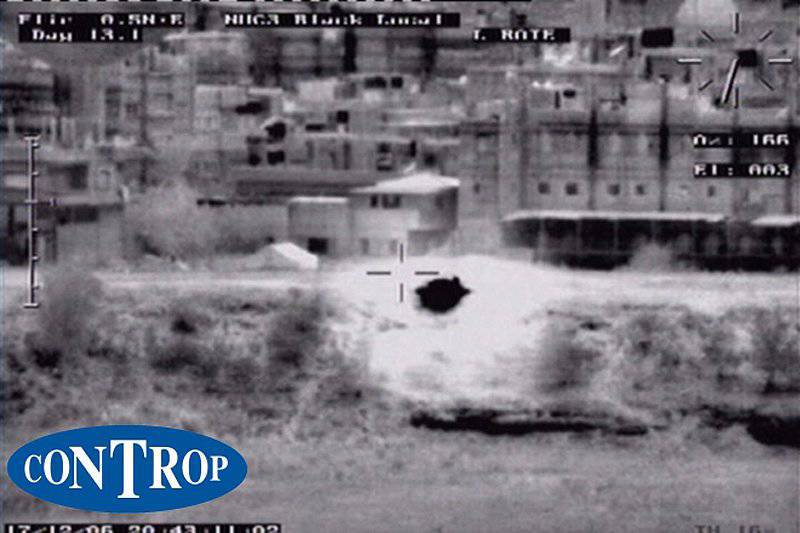
The function of the local automatic gain control development company Controp
USA
The American company FLIR Systems worked with Simrad (see above) on combat surveillance equipment and, in addition, produces a line of its own devices. The company's RANGER-HRC system consists of a cooled thermal imager with x12,5 magnification, operating in the 3-5 micron range. Meanwhile, a color camera has three fields of view: standard, long distance and ultra long range. In addition, customers can choose a laser rangefinder with a range of up to 20 km. The RANGER-II / III model has two fields of view.
Unlike the RANGER family, the FLIR Systems THERMOVISION 2000 / 3000 thermal imager has three fields of view and an infrared photo detector on quantum wells (QWIP) 320x240 in the case of THERMOVISION 2000, and QWIP 640XX480 for the THERMOVISION 3000 model The line of models for observation of the FLIR company is really big, there is still THERMOVISION Sentry II with a continuous increase in x12 and a day camera.
For general observation, FLIR Systems manufactures several thermal imaging binoculars, such as MILCAM RECON III Lite (also known as AN / PAS-26 in the US Armed Forces), which includes an 640xXNNX VOx microbolometer, a laser pointer and a color channel. MILCAM RECON III operates in the 480-8 micron range. With a mass of 12 kg, these binoculars can be hand-held or mounted on a tripod. The LOCALIR model is added to MILCAM RECON III, in which a laser range finder and a digital compass with an accuracy of up to 2,5 mil plus GPS and an optional laser pointer are added. LOCALIR operates in the 0,3-3 and 5-8 microns range and has a small mass of less than 12 kg.
MILCAM RECON III OBSERVER is also marketed under the designation AN / PAS-24, it has similar characteristics with the previous model and an optional laser pointer. FLIR Systems has created this model for highly mobile surveillance tasks; users who need extremely low weight can choose MILCAM RECON III ULTRALITE from the FLIR System. The device has a digital zoom x2 and x4 plus microbolometer 640x480 Vox, its weight is less than 1,7 kg, it works in the 8 – 12 micron range, the battery life is four hours.
Like many models discussed in this article, the RECON portable thermal imager from FLIR Systems has a small mass and works in the 3 – 5 micron range at long distances. It can be used for border surveillance, national security tasks, intelligence and surveillance. RECON can detect vehicles at a distance of 1 km. All sensory devices are installed in a 3,2 kg body, including a battery with an operating time of about 2,5 hours. Another useful feature of the RECON camera is that it can be used in manual mode or connected to a computer for remote control operations. In addition, for buyers who need a model operating in the 1,06, 4,5 and 4,8 micron ranges, FLIR Systems manufactures a handheld thermal imager SEASPOT-III with a mass of 2,4 kg.
Thermal surveillance systems are also a specialty of the American company DRS Technologies. In particular, the company manufactures a handheld device under the designation MX-2 A1110 Rugged Thermal Imager (reinforced thermal imager). DRS Technologies has developed this model as a universal system that can be used for reconnaissance and observation of the battlefield, it works in the 8 – 12 micron range and is equipped with a removable eyepiece for remote work. The 4 AA thermal imager works, the rubberized and non-reflective coating ensures that it has increased strength while reducing visibility.
Nivisys manufactures a range of optical instruments for military and law enforcement agencies, including gun sights and night vision goggles. Since combat thermal imagers are considered here, it is worth mentioning the monocular of this company TAM-14 Thermal Acquisition Monocular. This universal device can be used in manual mode, it is mounted on a helmet or weapon. TAM-14 has a x2 zoom, a lot of 640 grams, the design is based on an uncooled sensor with a 7 – 14 micron range. Other Nivisys products include PHX-7 thermal imaging binoculars operating in the same spectrum band as TAM-14. It also uses an uncooled sensor technology, as in the UTAM-32 Universal Thermal Acquisition Monocular (Universal Thermal Detection Monocular) model, which the company says "represents the latest achievement in our series of hand-held thermal imagers." Like TAM-14, UTAM-32 can work in different configurations: manual, mounted on a weapon or attached to a helmet.
American Technologies Network, Corp. (ATN) produces a wide range of thermal imagers, the OTIS-14 and OTIS-17 universal systems, the THOR and RENEGADE series of weapon sights and the THERMAL EYE handheld device series. The FIITS image fusion series combines a thermal imaging camera and a brightness enhancer.
ITT Night Vision & Imaging is a well-known supplier of image intensifiers for night conditions to many allied and friendly countries. The latest model from DSNVG has been announced as the first night vision goggles to combine image intensification and thermal imaging in a compact unit.
ATN NIGHT SHADOW
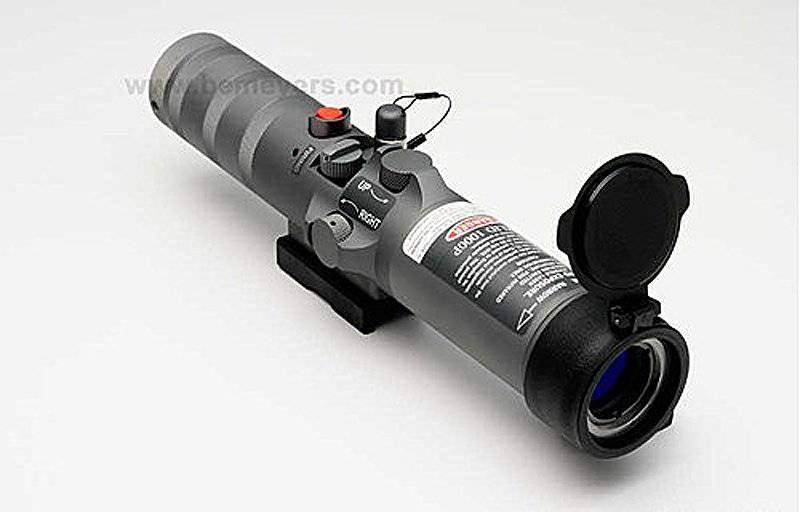
IZLID-1000
Canada
Behind the 49 th parallel, the Canadian General Starlight Company manufactures a number of universal thermal imaging systems to monitor the battlefield. They include the universal monocular TIM-14 Thermal Imaging Multipurpose Monocular, which has a digital magnification of x2 and several detection ranges depending on the size of the lens installed in the model. For 22-mm lenses a person can be determined at a distance of 475 meters and a machine on 800 meters, respectively for 16-mm lenses of a range are 305 meters and 550 meters, for 8,5-mm lenses of a range 170 meters and 300 meters. Uncooled TIM-14 can work without interruption up to 4 hours, optionally can be attached to a helmet or a weapon. The monocular TIM-14 joins TIM-28, which operates in the 8-12 micron range and is able to identify a person at a distance of 1 km and a vehicle at 1,5 km. TIM-28 can work up to 6 hours in a row, and its weight is only 800 grams.
Canada is also the birthplace of Newcon Optik, which offers a line of night vision devices, laser range finders, image stabilization devices and its amplification. Of particular interest for this article is the TVS-7B and SENTINEL thermal imaging systems. The first model is glasses that can identify a person on 475 meters and a car on 900 meters using an uncooled sensor. With only one set of batteries, TVS-7B can work up to 5 hours, its mass is 450 grams. Meanwhile, the SENTINEL thermal imaging binoculars from Newcon Optik have very long detection ranges, a person up to 1 km with a model with an 57-mm lens and 2,5 km with an 115-mm lens. Detection and identification ranges for a tank-sized target are 3000 meters and 6000 meters for 57-mm lenses and 4000 meters and 8000 meters for 115-mm lenses. Both SENTINEL versions can operate up to 8 hours without interruption at temperatures from -30 ° C to + 55 ° C.
ITT and night vision
In the field of thermal imaging ITT Corporation is one of the world leaders among developers, manufacturers and suppliers of helmet and head-mounted thermal imaging solutions based on a different technology than that described in the main article, namely, enhancing the brightness of the image. Its systems are widely used by American and Allied forces, as well as by national security forces.
The company received a $ 19,3 million contract from the Research and Development Intelligence and Surveillance Center for the supply of AN / PVS-14 monocular devices, the most popular and used night vision goggles. 80% of these points are for expeditionary forces, the remaining amount for fleet and the army. “We are pleased to support all types of US forces with our night vision goggles,” said Mike Hayman, president of ITT’s night vision division. “This contract allowed ITT to continue to develop better technology to help the American soldier wield the night.”
The AN / PVS-14 is a lightweight and reliable thermal imaging monocular with high performance that provides improved resolution for improved mobility and target identification. These durable devices can be hand-held, attached to a helmet or camera, and also to a weapon. The AN / PVS-14 is powered by a single AA battery and uses the ITT-patented PINNACLE Generation 3 image intensifier. The Gen 3 PINNACLE tube can collect and enhance the existing luminous flux more than 10 times compared to the previous generation.
Hack and predictor Aviator
The experience of advanced observers in modern wars will have a major impact on the design criteria for advanced products used in tomorrow’s conflicts. The wars in Iraq and Afghanistan were very instructive in showing that advanced observers working on the ground required increasing long-range detection and identification of targets. This is combined with the desire that the next generation systems have even more impressive image clarity and improved means of distributing the image among other users. More and more advanced systems and companies producing these devices are needed; they will have to tackle a serious task - creating models with enhanced capabilities while maintaining the mass of devices, or even reducing it.
Materials used:
www.monch.com
www.sagem.com
www.jenoptik.com
www.thalesgroup.com
www.vectronix.com
www.elbitsystems.com
www.itlasers.co.il
www.flir.com
www.exelisinc.com
www.controp.com
www.nvoptics.com
www.itt.com
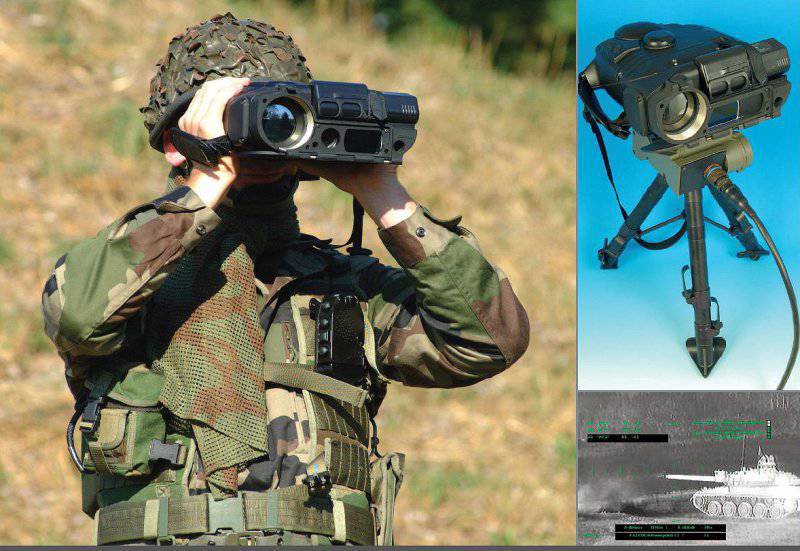
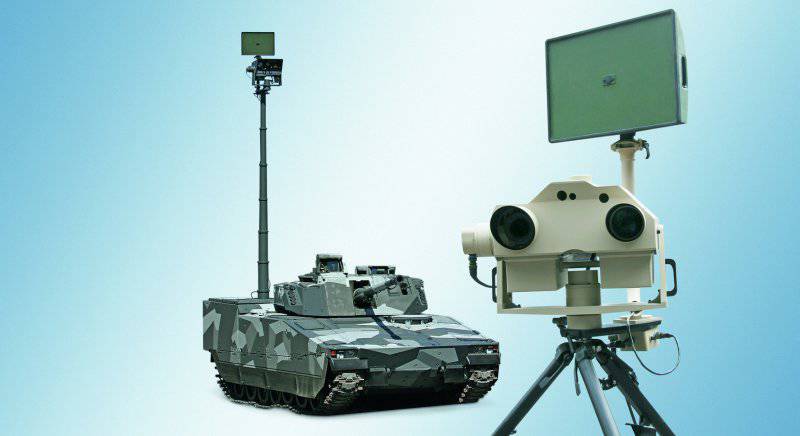
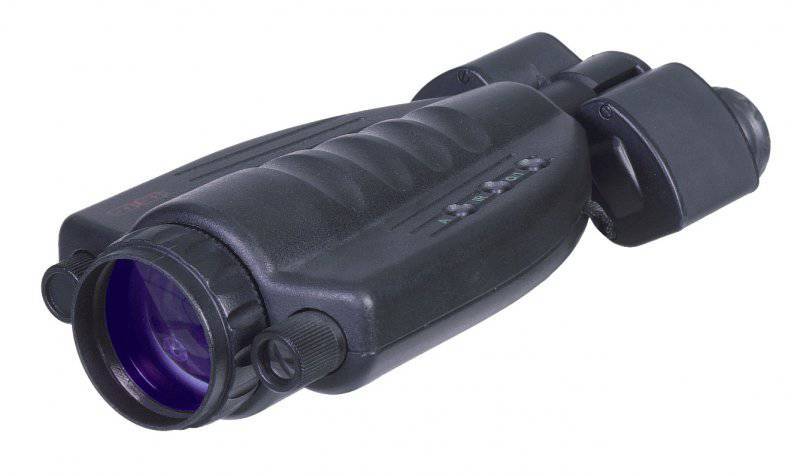
Information